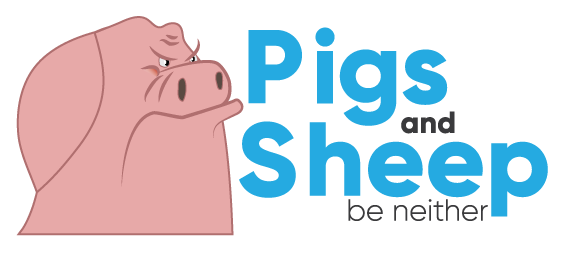One evening, when you’re watching television, pay attention to the commercials you see. Pay special attention to the relationships depicted between the people in the commercials, and take note of the demographics of each character. You may notice a pattern. A commercial with a husband and wife or boyfriend and girlfriend – who’s the wise, competent and patient one, and who’s the buffoon, ditz, or subordinate? Who is befuddled, and who understands? Who gets it wrong and who gets it right? Who’s bemused and who’s sheepish? I’ve obviously telegraphed the answer – men are predominantly presented as the weaker member of couples.
Once you attune yourself to the male-female dynamic, start paying attention to other outward identifiers. See if you can sort and rank the projected intelligence, wisdom and competence of the characters in each commercial, then take note of their demographics. Race, ethnicity, age… there are hierarchies. We are shown who is allowed to mock whom, who is allowed to bemusedly condescend to whom, and who is presumed to be the role model, the aspirant and the buffoon. A remarkably consistent pattern becomes obvious when we know what to look for. And, once we’re alert to it, we see that it extends beyond commercials. Sitcoms, dramas and other scripted entertainment reveal similar patterns. Law and Order, the long-running NBC procedural, operated by some reports under a mandate from its producer that over 80% of criminals be white or wealthy. Does that percentage mirror actual societal crime rates or is it deliberate and agenda-driven? The latter, it seems: Dick Wolf, the show’s producer “limits the number of shows containing minority victims, including blacks and Muslims, to four or five episodes a season out of 22 to 24.”
While I take issue with entertainment producers who choose to incorporate hidden agendas into their products, I can accept why advertising agencies would wish to conform to certain types of relational depictions rooted in demographics. They’re out to sell product, and in our hyper-sensitized society, offending a grievance group can do quick harm to the product’s reputation and sales. Questions come to mind, though: how much of this bias is actually rooted in dispassionate business analysis and salesmanship rather than subconscious cultural bias or overt intent to inculcate? Are the commercial writers deliberately writing white men as buffoons and black women as sages, or are their writings the result of genuine beliefs? Are they demonstrating subconscious biases? Are they simply taking the safe route out of fear of negative outcomes?
The answer to this can be found in part to my own internal reaction to these questions. I just spent a good bit of time staring at what I just wrote, wondering if it was safe to even ask these questions. Who might I offend and what accusations might I face? But, if I am to engage in a meaningful dialogue, and if I am to offer an idea up for discussion and possible rebuttal, I have to ask the questions. If someone takes offense to mere questions, the issue lies with that someone, because the offense taken will be unjust.
Nevertheless, I feel I am taking a risk merely by broaching this subject. This suggests that the advertisers are consciously taking the safe route, that they are aware of who can safely be mocked, who must be portrayed in certain fashions, and what must never be spoken or depicted. It’s not their job to take risks of this nature – there’s little to no up side.
Men would be right to complain about ubiquity with which television commercials portray them as fools in comparison to the women in their lives, but men aren’t allowed to complain about such things. This right to complain can be judged in any mix of demographic elements, and we can create a list of who gets to complain about whom.
We know who would be at the bottom of the list when it comes to this entitlement to aggrievement: white males. We don’t get to complain about anything. Things become less clear, though, when we try and figure out who gets to complain about whom once white males are taken out of the equation. Do black men get to complain about white women, or vice versa? Do latinos get to complain about blacks? How about asians? Where does religion figure in? Does an elderly black woman trump an elderly Native American woman?
Which demographic trumps which? Does race prioritize over gender? Is ethnicity within race a big factor, internally or externally? What is the hierarchy of aggrievement? We know who’s at the bottom – can we construct a demographic profile of a hypothetical person at the top?
The fundamental lack in all of this sorting, prioritizing and subordinating is, of course, the individual. Nowhere in any of this is a person judged on his or her merit, on the content of his or her character, or simply on personality. Any given person can be a shining example of humanity’s pinnacle, and any given person can be an idiot or an asshole, yet that doesn’t matter in the least in determining whether a person is justified in feeling aggrieved towards another, not when society has been organized into identity groups based on outward markers. Yet, without prioritizing the individual, there is no way out of the grievance hierarchy. There is no path to a bias-free society as long as people take note of color, gender, ethnicity, religion, age, etc.
As long as we believe that some, solely by virtue of their demographics, have more right to be aggrieved than others, we’ll remain a society divided.

Active Comment Threads
Most Commented Posts
Universal Background Checks – A Back Door to Universal Registration
COVID Mask Follies
When Everything Is Illegal…
An Anti-Vax Inflection Point?
“Not In My Name”
The Great Social Media Crackup
War Comes Through The Overton Window
The First Rule of Italian Driving
Most Active Commenters